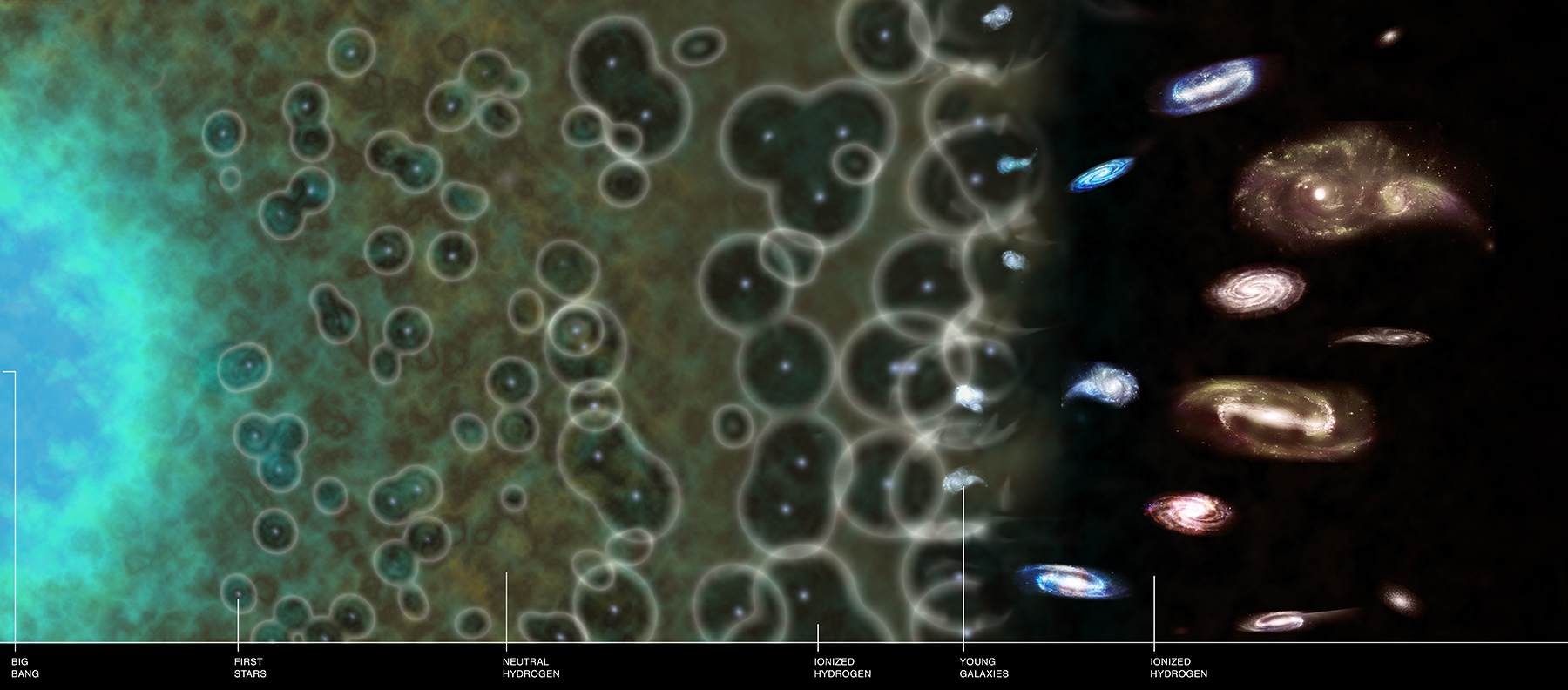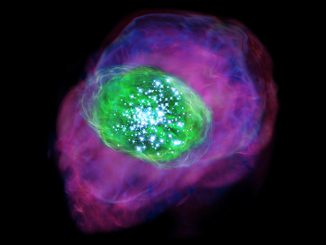
In 2015, Dr. David Sobral of Lancaster University led a team that found the first example of a spectacularly bright galaxy within the epoch of reionisation, named Cosmos Redshift 7 or CR7, which may harbour first generation stars. The team also discovered a similar galaxy, MASOSA, which, together with Himiko, discovered by a Japanese team, hinted at a larger population of similar objects, perhaps made up of the earliest stars and/or black holes.
Using the Subaru and Keck telescopes on Hawaii, and the Very Large Telescope in Chile, Sobral and his team, along with a group in the US, have now found more examples of this population. All of the newly found galaxies seem to have a large bubble of ionised gas around them.
Sobral comments: “Stars and black holes in the earliest, brightest galaxies must have pumped out so much ultraviolet light that they quickly broke up hydrogen atoms in the surrounding universe. The fainter galaxies seem to have stayed shrouded from view for a lot longer. Even when they eventually become visible, they show evidence of plenty of opaque material still in place around them.”
“This makes the bright galaxies visible much earlier on in the history of the universe, allowing us to not only use them to study reionisation itself, but also to study the properties of the very first galaxies and the black holes they may contain,” adds team member Jorryt Matthee, a PhD student at Leiden Observatory.
With five bright sources now confirmed, and many more expected to follow, CR7 may be part of a ‘team’ of tens to hundreds of thousands of bright galaxies. The fifth (V) galaxy, also discovered by Sobral and his team, takes the name VR7, this time in tribute to the astrophysicist Vera Rubin, who in 1996 became the first woman in over 150 years to win the Gold Medal of the Royal Astronomical Society.
Sobral is now looking forward to continuing his work with the new telescopes that will become available in the next few years. He comments: “What is really surprising is that the galaxies we find are much more numerous than people assumed, and they have a puzzling diversity. When telescopes like the James Webb Space Telescope are up and running, we will be able to take a closer look at these intriguing objects. We have only scratched the surface, and so the next few years will certainly bring fantastic new discoveries.”
For now, astronomers are using the largest existing telescopes on the ground and in space to better assess the composition, size and shape of the new galaxies. Results from this work have and will appear in papers in the journal Monthly Notices of the Royal Astronomical Society.



